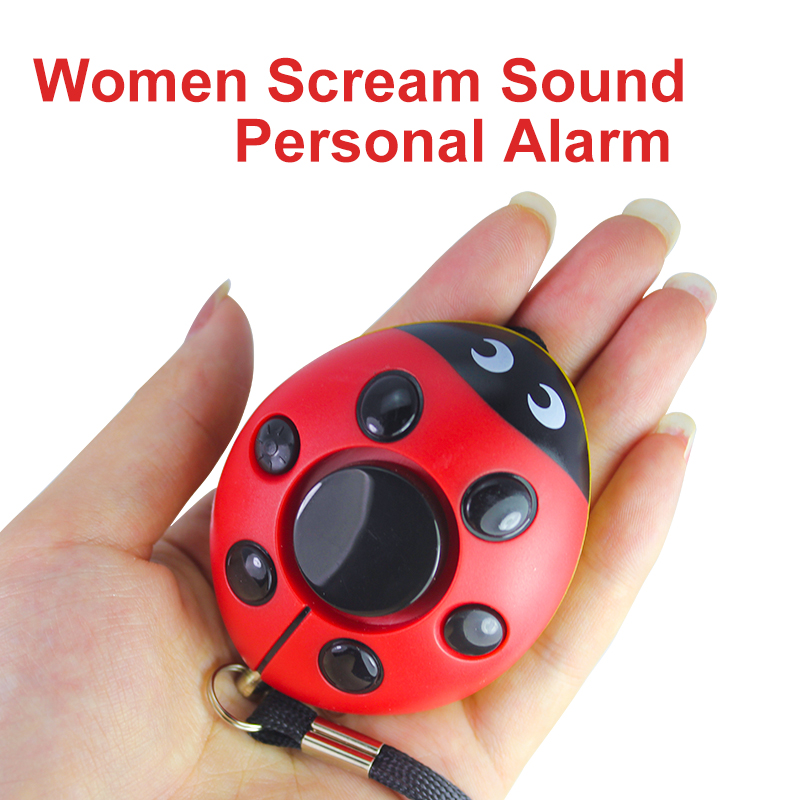 සියවසකට වැඩි කාලයක් ව්යාපාරයේ යෙදී සිටින ADT වැනි සාම්ප්රදායික සැපයුම්කරුවන්ට වඩා අධි තාක්ෂණික තරඟකරුවන් නිසා නේවාසික අනතුරු ඇඟවීමේ පද්ධති වඩාත් ජනප්රිය සහ දැරිය හැකි මිලකට ලබා ගත හැකිය.
සියවසකට වැඩි කාලයක් ව්යාපාරයේ යෙදී සිටින ADT වැනි සාම්ප්රදායික සැපයුම්කරුවන්ට වඩා අධි තාක්ෂණික තරඟකරුවන් නිසා නේවාසික අනතුරු ඇඟවීමේ පද්ධති වඩාත් ජනප්රිය සහ දැරිය හැකි මිලකට ලබා ගත හැකිය.
මෙම නව පරම්පරාවේ පද්ධති ඔබේ නිවසට ඇතුළුවීම හඳුනා ගැනීමේ හැකියාවෙන් සරල සිට නවීන විය හැකි අතර තවත් බොහෝ දේ ඇත. බොහෝ ඒවා දැන් නිවාස ස්වයංක්රීයකරණ පද්ධති දුරස්ථව නිරීක්ෂණය කිරීම සහ පාලනය කිරීම ඒකාබද්ධ කරමින් සිටින අතර, මෑතකදී ලාස් වේගාස් හි පැවති පාරිභෝගික ඉලෙක්ට්රොනික ප්රදර්ශනයේදී මෙය පැහැදිලිව දක්නට ලැබුණි, එහිදී ජීවිත ආරක්ෂාව සහ සුවපහසුව පිළිබඳ ඇදහිය නොහැකි තාක්ෂණයක් ප්රදර්ශනය කරන ලදී.
දැන් ඔබට ඔබගේ අනතුරු ඇඟවීමේ තත්ත්වය (සන්නද්ධ හෝ නිරායුධ), ඇතුළුවීම සහ පිටවීම දුරස්ථව නිරීක්ෂණය කළ හැකි අතර ලෝකයේ ඕනෑම තැනක සිට ඔබේ පද්ධතිය සක්රිය සහ අක්රිය කළ හැකිය. පරිසර උෂ්ණත්වය, ජල කාන්දුවීම්, කාබන් මොනොක්සයිඩ් මට්ටම්, වීඩියෝ කැමරා, ගෘහස්ථ සහ එළිමහන් ආලෝකකරණය, තාප ස්ථාය, ගරාජ් දොරවල්, දොර අගුල් සහ වෛද්ය ඇඟවීම් සියල්ල ඔබගේ ස්මාර්ට් ජංගම දුරකථනය, ටැබ්ලටය හෝ පරිගණකය හරහා එක් දොරටුවකින් පාලනය කළ හැකිය.
වයර් ධාවනය කිරීමේ පිරිවැය සහ දුෂ්කරතාවය හේතුවෙන් බොහෝ අනතුරු ඇඟවීමේ සමාගම් ඔබේ නිවස පුරා විවිධ සංවේදක ස්ථාපනය කරන විට රැහැන් රහිත වී ඇත. අනතුරු ඇඟවීමේ සේවාවක් ලබා දෙන සියලුම සමාගම් පාහේ රැහැන් රහිත චාරිකා පුළුල් පරාසයක් මත විශ්වාසය තබති, මන්ද ඒවා මිල අඩු, ස්ථානගත කිරීමට සහ ස්ථාපනය කිරීමට පහසු සහ විශ්වාසදායක ය. අවාසනාවකට මෙන්, වාණිජ මට්ටමේ ආරක්ෂක උපාංග හැර, ඒවා සාමාන්යයෙන් සාම්ප්රදායික දෘඪ-වයර් චාරිකා තරම් ආරක්ෂිත නොවේ.
පද්ධතියේ සැලසුම සහ රැහැන් රහිත තාක්ෂණයේ වර්ගය අනුව, දැනුමැති ආක්රමණිකයින්ට රැහැන් රහිත සංවේදක ඉතා පහසුවෙන් පරාජය කළ හැකිය. මේ කතාව ආරම්භ වන්නේ එතැනිනි.
2008 දී, මම Engadget හි LaserShield පද්ධතිය පිළිබඳ සවිස්තරාත්මක විශ්ලේෂණයක් ලිව්වෙමි. LaserShield යනු නිවාස සහ ව්යාපාර සඳහා ජාතික වශයෙන් ප්රචාරය කරන ලද අනතුරු ඇඟවීමේ පැකේජයක් වන අතර එය ආරක්ෂිත, ස්ථාපනය කිරීමට පහසු සහ ලාභදායී ලෙස ප්රචාරය කරන ලදී. ඔවුන්ගේ වෙබ් අඩවියේ ඔවුන් තම ගනුදෙනුකරුවන්ට පවසන්නේ එය "ආරක්ෂාව සරල කර ඇත" සහ "පෙට්ටියක ආරක්ෂාව" බවයි. ගැටළුව වන්නේ දෘඩාංග සුරක්ෂිත කිරීමට කෙටිමං නොමැති වීමයි. 2008 දී මම මෙම පද්ධතිය පිළිබඳ විශ්ලේෂණය සිදු කළ විට, මම නගර නිවසක කෙටි වීඩියෝවක් රූගත කළෙමි, එය මිල අඩු වෝකි-ටෝකියක් සහ පද්ධතිය ආරක්ෂිත විය යුතු ආකාරය පෙන්වන වඩාත් සවිස්තරාත්මක වීඩියෝවක් සමඟ පද්ධතිය පරාජය කිරීම කොතරම් පහසුද යන්න පෙන්නුම් කරයි. ඔබට අපගේ වාර්තාව in.security.org හි කියවිය හැකිය.
ඒ කාලයේදීම වගේ SimpliSafe නමින් තවත් සමාගමක් වෙළඳපොළට පිවිසුණා. මම මෑතකදී සම්මුඛ සාකච්ඡාවකට එක් වූ එහි ජ්යෙෂ්ඨ කාර්මික ශිල්පියෙකුට අනුව, සමාගම 2008 දී පමණ ව්යාපාර කටයුතු ආරම්භ කළ අතර දැන් ඔවුන්ගේ අනතුරු ඇඟවීමේ සේවාව සඳහා රට පුරා ග්රාහකයින් 200,000 ක් පමණ සිටී.
වසර හතක් වේගයෙන් ඉදිරියට. SimpliSafe තවමත් අප සමඟ සිටින අතර ස්ථාපනය කිරීමට පහසු, ක්රමලේඛනය කිරීමට පහසු සහ අනතුරු ඇඟවීමේ මධ්යස්ථානයක් සමඟ සන්නිවේදනය කිරීමට දුරකථන මාර්ගයක් අවශ්ය නොවන ඔබ විසින්ම කළ හැකි අනතුරු ඇඟවීමේ පද්ධතියක් පිරිනමයි. එය සෙලියුලර් භාවිතා කරයි, එනම් වඩාත් කාර්යක්ෂම සන්නිවේදන මාර්ගයකි. සෙලියුලර් සංඥාව අවහිර කළ හැකි වුවද, සොරුන් විසින් දුරකථන මාර්ග කපා හැරීමේ විභවයෙන් එය පීඩා විඳින්නේ නැත.
SimpliSafe මගේ අවධානය දිනා ගත්තේ ඔවුන් ජාතික වෙළඳ දැන්වීම් රාශියක් කරන නිසා සහ සමහර ආකාරවලින් ADT සහ අනෙකුත් ප්රධාන අනතුරු ඇඟවීමේ සැපයුම්කරුවන්ට වඩා ඉතා තරඟකාරී නිෂ්පාදනයක් ඇති නිසා, උපකරණ සඳහා ප්රාග්ධන පිරිවැය බෙහෙවින් අඩු වන අතර අධීක්ෂණය සඳහා මසකට පිරිවැයක් දරයි. මෙම පද්ධතිය පිළිබඳ මගේ විශ්ලේෂණය in.security.org හි කියවන්න.
SimpliSafe, LaserShield පද්ධතියට වඩා (තවමත් අලෙවි වෙමින් පවතී) බොහෝ සංකීර්ණ බව පෙනුනද, එය පරාජය කිරීමේ ක්රමවේදයන්ටද ගොදුරු විය හැකිය. SimpliSafe වෙත ලැබී ඇති ජාතික මාධ්ය අනුමත කිරීම් රාශියක් ඔබ කියවා විශ්වාස කරන්නේ නම්, මෙම පද්ධතිය විශාල අනතුරු ඇඟවීමේ සමාගම් සඳහා පාරිභෝගික පිළිතුර යැයි ඔබ සිතනු ඇත. ඔව්, එය සාම්ප්රදායික අනතුරු ඇඟවීමේ සමාගම්වල පිරිවැයෙන් අඩක් පමණ වන ඉතා පිළිවෙලට බොහෝ හොඳ ඉඟි ලබා දෙයි. අවාසනාවකට, ඉහළ පෙළේ සහ ගෞරවනීය මාධ්ය අනුමත කිරීම් හෝ ලිපි වලින් එකක්වත් ආරක්ෂාව ගැන හෝ මෙම සම්පූර්ණයෙන්ම රැහැන් රහිත පද්ධතිවල විභව අවදානම් ගැන කතා කළේ නැත.
මම SimpliSafe වෙතින් පරීක්ෂණ සඳහා පද්ධතියක් ලබා ගත් අතර සමාගම්වල ජ්යෙෂ්ඨ ඉංජිනේරුවරයාගෙන් තාක්ෂණික ප්රශ්න රාශියක් ඇසුවෙමි. ඉන්පසු අපි ෆ්ලොරිඩාවේ කොන්ඩෝවක චලන සංවේදකයක්, චුම්භක දොරක්, පැනික් බොත්තමක් සහ සන්නිවේදන ද්වාරයක් සවි කළෙමු. එය විශ්රාමික ජ්යෙෂ්ඨ FBI නියෝජිතයෙකුට අයත් වන අතර ඔහුගේ නිවසේ ආයුධ, දුර්ලභ කලා සහ තවත් වටිනා වත්කම් රාශියක් තිබුණි. අපි වීඩියෝ තුනක් නිෂ්පාදනය කළෙමු: පද්ධතියේ සාමාන්ය ක්රියාකාරිත්වය සහ සැකසුම පෙන්වන එකක්, සියලුම චාරිකා පහසුවෙන් මඟ හරින ආකාරය පෙන්වන එකක් සහ ඔවුන් සපයන චුම්භක චාරිකා හෝම් ඩිපෝවේ ශත විසිපහක චුම්බකයක් සහ ස්කොච් ටේප් එකකින් පරාජය කළ හැකි ආකාරය පෙන්වන එකක්.
එක් ප්රධාන ගැටළුවක් නම්, සංවේදක එක්-මාර්ග උපාංග වීමයි, එනම් ඒවා ක්රියා විරහිත වූ විට ඒවා ද්වාරයට අනතුරු ඇඟවීමේ සංඥාවක් යවයි. සියලුම අනතුරු ඇඟවීමේ සංවේදක එක් සංඛ්යාතයකින් සම්ප්රේෂණය වන අතර එය අන්තර්ජාලයේ පහසුවෙන් තීරණය කළ හැකිය. එවිට රේඩියෝ සම්ප්රේෂකයක් ලේසර්ෂීල්ඩ් පද්ධතිය මෙන් මෙම නිශ්චිත සංඛ්යාතය සඳහා වැඩසටහන්ගත කළ හැකිය. මම එය කළේ පහසුවෙන් ලබා ගත හැකි වෝකි-ටෝකියකින්. මෙම සැලසුමේ ඇති ගැටළුව නම්, ජාල සේවාදායකයන්ට සේවා ප්රතික්ෂේප කිරීමේ (DoS) ප්රහාරයක් මෙන්, ද්වාර ග්රාහකය හිර කළ හැකි වීමයි. අනතුරු ඇඟවීමේ චාරිකා වලින් සංඥා සැකසිය යුතු ග්රාහකය අන්ධ වී ඇති අතර කිසි විටෙකත් අනතුරු ඇඟවීමේ තත්වයක් පිළිබඳ දැනුම්දීමක් නොලැබේ.
අපි ෆ්ලොරිඩා කොන්ඩෝව හරහා මිනිත්තු කිහිපයක් ඇවිද ගිය අතර, යතුරු පුවරුවේ සවි කර ඇති පැනික් එලාම් එක ඇතුළුව කිසිදු අනතුරු ඇඟවීමක් කිසි විටෙකත් ක්රියාත්මක නොවීය. මම සොරෙකු වූවා නම්, රටේ වඩාත්ම ගෞරවනීය මුද්රිත සහ රූපවාහිනී මාධ්ය අනුමත කර ඇති පද්ධතියක් පරාජය කිරීමෙන් තුවක්කු, වටිනා කලා කෘති සහ තවත් බොහෝ වටිනා දේවල් සොරකම් කිරීමට මට හැකිව තිබුණි.
මෙය මා "රූපවාහිනී වෛද්යවරුන්" ලෙස ලේබල් කළ දේ සිහිගන්වයි, ඔවුන් ජාතික වශයෙන් ඖෂධ ගබඩා සහ අනෙකුත් ප්රධාන සිල්ලර වෙළෙන්දන් විසින් අලෙවි කරන ලද ආරක්ෂිත සහ ළමා-ප්රතිරෝධී බෙහෙත් වට්ටෝරු බහාලුමක් අනුමත කළහ. එය කිසිසේත් ආරක්ෂිත හෝ ළමා-ප්රතිරෝධී නොවීය. එම සමාගම ඉක්මනින් ව්යාපාරයෙන් ඉවත් වූ අතර, මෙම නිෂ්පාදනයේ ආරක්ෂාව සඳහා ඔවුන්ගේ අනුමත කිරීම් මගින් නිහඬව සහතික වූ රූපවාහිනී වෛද්යවරු, යටින් පවතින ගැටලුවට විසඳුම් නොදී ඔවුන්ගේ YouTube වීඩියෝ ඉවත් කළහ.
මහජනතාව මෙවැනි සාක්ෂි සැකයෙන් කියවිය යුතුය, මන්ද ඒවා හුදෙක් වෙනස් හා දක්ෂ වෙළඳ දැන්වීම් ක්රමයක් වන අතර, සාමාන්යයෙන් ආරක්ෂාව යනු කුමක්ද යන්න පිළිබඳ ඉඟියක් නොමැති වාර්තාකරුවන් සහ මහජන සම්බන්ධතා සමාගම් විසින් සිදු කරනු ලැබේ. අවාසනාවකට මෙන්, පාරිභෝගිකයින් මෙම අනුමත කිරීම් විශ්වාස කරන අතර ඔවුන් කතා කරන්නේ කුමක් දැයි දැන ගැනීමට මාධ්ය ආයතනය විශ්වාස කරයි. බොහෝ විට, වාර්තාකරුවන් තේරුම් ගන්නේ පිරිවැය, ස්ථාපනය කිරීමේ පහසුව සහ මාසික කොන්ත්රාත්තු වැනි සරල ගැටළු පමණි. නමුත් ඔබ ඔබේ පවුල, ඔබේ නිවස සහ ඔබේ වත්කම් ආරක්ෂා කිරීම සඳහා අනතුරු ඇඟවීමේ පද්ධතියක් මිලදී ගන්නා විට, ඔබ මූලික ආරක්ෂක දුර්වලතා පිළිබඳව දැනුවත් විය යුතුය, මන්ද "ආරක්ෂක පද්ධතිය" යන යෙදුමට ආවේණික වූ ආරක්ෂාව පිළිබඳ සංකල්පයයි.
SimpliSafe පද්ධතිය යනු විශාල ජාතික සමාගම් විසින් නිර්මාණය කර, ස්ථාපනය කර සහ නිරීක්ෂණය කරනු ලබන වඩා මිල අධික අනතුරු ඇඟවීමේ පද්ධති සඳහා දැරිය හැකි විකල්පයකි. එබැවින් පාරිභෝගිකයා සඳහා ඇති ප්රශ්නය වන්නේ ආරක්ෂාව යනු කුමක්ද සහ සංජානනීය තර්ජන මත පදනම්ව කොපමණ ආරක්ෂාවක් අවශ්යද යන්නයි. ඒ සඳහා අනතුරු ඇඟවීමේ වෙළෙන්දන්ගේ පැත්තෙන් සම්පූර්ණ හෙළිදරව් කිරීමක් අවශ්ය වන අතර, මම SimpliSafe නියෝජිතයින්ට යෝජනා කළ පරිදි. අනාගත ගැනුම්කරුට සම්පූර්ණ දැනුමක් ලබා දෙන අතර ඔවුන්ගේ පුද්ගලික අවශ්යතා මත පදනම්ව මිලදී ගත යුතු දේ පිළිබඳව බුද්ධිමත් තීරණයක් ගත හැකි වන පරිදි ඔවුන් ඔවුන්ගේ ඇසුරුම්කරණයේ සහ පරිශීලක අත්පොත්වල වියාචන සහ අනතුරු ඇඟවීම් තැබිය යුතුය.
ඩොලර් තුන්සියයකටත් අඩු මිලකට ලබා ගත හැකි උපකරණයක් භාවිතා කරන, සාපේක්ෂව නුපුහුණු සොරෙකුට ඔබේ අනතුරු ඇඟවීමේ පද්ධතිය පහසුවෙන් අනතුරට පත් කළ හැකි යැයි ඔබ කනස්සල්ලට පත්ව සිටිනවාද? ඊටත් වඩා වැදගත් කාරණයක් නම්: ඔබට පහසුවෙන් පරාජය කළ හැකි පද්ධතියක් ඇති බව සොරුන්ට ප්රචාරය කිරීමට ඔබ කැමතිද? ඔබේ දොරවල් හෝ ජනෙල් මත එම ස්ටිකර් එකක් හෝ ඔබ ස්ථාපනය කර ඇති අනතුරු ඇඟවීමේ පද්ධතිය කුමක්දැයි ඔබේ ඉදිරිපස මිදුලේ පුවරුවක් තබන සෑම අවස්ථාවකම, එය මඟ හැරිය හැකි බව ඔවුන්ට පවසන බව මතක තබා ගන්න.
අනතුරු ඇඟවීමේ ව්යාපාරයේ නොමිලේ දිවා ආහාර නොමැති අතර ඔබ ගෙවන දේ ඔබට ලැබේ. එබැවින් ඔබ මෙම පද්ධතිවලින් ඕනෑම එකක් මිලදී ගැනීමට පෙර, ඔබට ආරක්ෂාව සඳහා ලැබෙන්නේ කුමක්ද යන්න සහ වඩාත් වැදගත් ලෙස, තාක්ෂණය සහ ආරක්ෂක ඉංජිනේරු විද්යාව අනුව අඩුපාඩු මොනවාද යන්න හරියටම තේරුම් ගත යුතුය.
සටහන: අපගේ 2008 සොයාගැනීම් තහවුරු කිරීම සඳහා අපි මේ මාසයේ ලේසර්ෂීල්ඩ් හි වත්මන් අනුවාදයක් ලබා ගත්තෙමු. 2008 වීඩියෝවේ දැක්වෙන පරිදි එය පරාජය කිරීම එතරම්ම පහසු විය.
මගේ ලෝකයේ මම තොප්පි දෙකක් පැළඳ සිටිමි: මම විමර්ශන නීතිඥයෙක් සහ භෞතික ආරක්ෂක/සන්නිවේදන විශේෂඥයෙක්. පසුගිය වසර හතළිහ තුළ, මම විමර්ශන කටයුතුවල නියැලී සිටිමි, ආ...
පළ කළ කාලය: 2019 ජූනි-28



